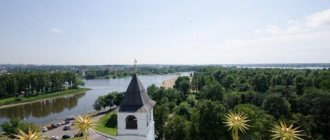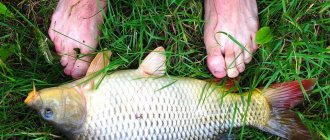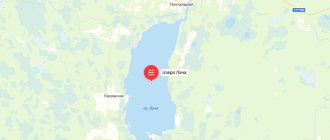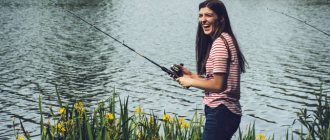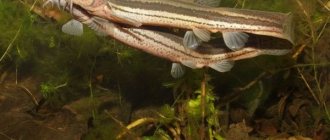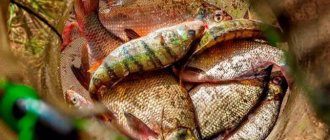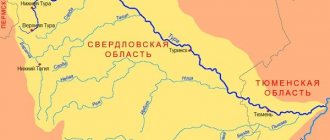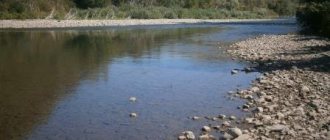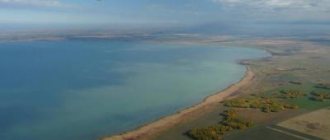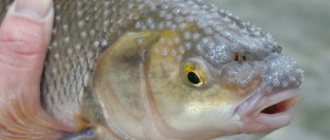- Story
- Rest
- Fishing
- Depth map
- Video
- How to get there
The Lipetsk region is rich in unique natural spots. There you can visit nature reserves, estates, lakes with beautiful views. The Matyrskoye Reservoir (Lipetsk Sea) - the largest body of water in the Lipetsk region - was no exception.
general information
This is an artificially created reservoir. Its surface area is 45 square meters. km., width 1.5 km, length 40 km. The volume is 144 million cubic meters of water. Located on the Matyra River on the Left tributary of the river. Voronezh in the Gryazinsky district. The so-called sea was formed during the Soviet era. Currently it is aimed at the needs of recreation and water supply for CHPP-2 and rural households. At the end of the 20th century, NLMK was privatized, and in 2004 it returned to the ownership of the Russian Federation. Today, along the banks there are the settlements of Kazinka, Yarlukovo, Kamennoe, as well as sanatoriums and recreation areas. The Matyr Reservoir is the largest reservoir in the Lipetsk region.
This is interesting: Matyra: fishing and what kind of fish is found
Monster of the Lipetsk Reservoir
In the Lipetsk region, on the territory of the Gryazinsky district, on the Matyra River there is a large reservoir, popularly called the Lipetsk Sea . It really has impressive dimensions: the length reaches 40 kilometers, the width is one and a half, and the depth reaches 13 meters.
In the eighties of the 20th century, the reservoir was used for commercial fishing, but now the ecological situation there is far from ideal. In summer, the “sea” blooms, and due to lack of oxygen, fish begin to die en masse. And suddenly, a few years ago, in the vicinity of the reservoir they started talking that a local monster, like the Scottish Nesen, had appeared in it.
Monster's excesses
The Lipetsk ichthyosaur (or plesiosaur) behaved disgracefully. One summer night, ninth-grader Sasha Pospelov went swimming with friends. He swam further away, and suddenly the water next to him began to boil, and something pushed him hard into his leg. The schoolboy swam to the shore as quickly as possible, and when he got out, he saw that blood was oozing from his leg. As a souvenir of this adventure, Sasha was left with a large abrasion on her thigh: the skin was scraped off like sandpaper.
The avid fisherman Semyon Lvov also had a chance to see the unknown monster. One morning he went fishing, but there was no bite, as if something had scared the fish away.
Lvov had heard a lot about the water monster, but somehow did not believe in these stories. So he sat there, patiently looking at the float, when he suddenly noticed some long shadow in the water about fifteen meters from the shore.
Then something like a hump appeared on the surface. Semyon froze, and after a couple of minutes the creature dived again. It was quite big, judging by the splash, and it looked like a fish tail flashed. Lvov considered the monster to be similar to a catfish, only the size was clearly excessive - ten meters, as it seemed to him, no less!
In short, many people have seen the ichthyosaur. And he clearly considered the reservoir his property. He ate fish, stole geese and other waterfowl. Several times, on the shores of the Lipetsk Sea, dogs walking along the shore mysteriously disappeared, and in front of fifty-year-old Evgenia Mulemina, a monster dragged away her own pig, Yashka.
“My Yashka was clean, he loved to swim,” she shared her impressions with journalists. - He goes into the water up to his belly and stands there, basking. At that time it was already getting dark, I went to herd him. Suddenly “it” jumps out of the water! Yashka only managed to squeal - there was a pig, and then there was no one! And circles spread across the water...
Giant catfish?
They tried to watch for the monster with nets, guns, and cameras. But everything is in vain. The only high-quality photo was taken by St. Petersburg resident Anatoly Golovko, who was vacationing in those parts in the fall. He was photographing local landscapes, and moreover, he managed to press the shutter of the camera in time, when for a second what seemed to him to be a “little whale” jumped out of the water.
After examining the picture, ichthyologists came to the conclusion that the strange creature most closely resembles a catfish, but what about the size! The length of the monster was estimated at seven meters, while the largest catfish ever described reached “only” five.
Since ancient times, catfish have really loved whirlpools and all kinds of dams with quiet water. Where they are sometimes caught. For example, in 2007, a catfish 274 centimeters long and weighing 130 kilograms was caught in the waters of the huge Kapchagay reservoir in the Almaty region (Kazakhstan). It’s just that the seven-meter length makes the Lipetsk monster unique even in a similar series.
However, what about the giant catfish or pound carp, which in the lower reaches of Matyra are caught by workers of fishing cooperatives with seines, when in the summer of 2012, a resident of the city of Gryazi, Nikolai Burtsev, caught a kilogram piranha in the waters of this river, which he then kept in the refrigerator for a long time, surprising his friends with the “exhibit” and not only.
Piranha Burtseva
Valdis Peipins
Fishing in the Altai Territory
- Where can you go fishing for free? ↓
- Ob River ↓
- Lake Petrovskoye ↓
- Bolshaya Kamyshinka River ↓
- Lake Horsetail ↓
- Charysh River ↓
- Lake Teletskoye ↓
- Paid fishing spots ↓
- Cascades ↓
- Mirror Pond ↓
- Beshentsevo Reservoir ↓
- Lake Krutinskoye ↓
- Rybatskaya Zaimka ↓
- Sorochy Log ↓
Fishing in the most beautiful nature of the Altai Territory can surprise any angler. These places are compared to Switzerland. In the Altai Territory they catch both midland fish and purely Siberian fish, which live only beyond the Ural Mountains. The most popular fish is Siberian grayling, which is not so easy to catch.
Where can you go fishing for free?
There are more than 30 large rivers and more than 17 thousand small rivers in the region. A peculiarity of local rivers is that, starting as mountain rivers, many of them become flat in their middle and lower reaches. The number of lakes in the Altai Territory, according to various sources, is from 7 to 13 thousand. The reservoirs are clean and transparent. What makes the lakes unique is the world's oldest surviving algae and mosquitoes, which are older than dinosaurs.
River Ob
The length of the Ob River in the Altai Territory is 453 km. The Ob is formed by the confluence of the Katun and Biya. The left bank is high, the right bank is low, flooded. There are many large and small tributaries, many settlements on the banks.
The river is home to more than 50 species of fish. Main fishing objects:
- Siberian pike (up to 12 kg);
- crucian carp;
- carp;
- pike perch (up to 8 kg);
- perch;
- roach;
- sorog;
- burbot;
- gudgeon;
- dace;
- grayling;
- taimen;
- lenok;
- ide;
- sterlet;
- peled;
- sturgeon;
- nelma;
- muksun;
- spike.
The most common is fishing from boats.
Main fishing methods:
- feeder;
- Tyrolean stick;
- spearfishing;
- winter lure and jig;
- spinning;
- fly fishing;
- donka;
- ring;
- mugs;
- boat;
- girders;
- winter float rod;
- all types of float gear for open water.
Lake Petrovskoye
Located in the Troitsky district. 90 km along the Biyskoe highway from Barnaul. The purest water and a unique ecological system. The banks are covered with forest. A popular place for winter and underwater fishing.
The following are caught in the lake:
- perch;
- roach;
- crucian carp;
- pike;
- bream;
- chebak;
- tench.
On the village side there is a sandy beach with free gazebos.
Bolshaya Kamyshinka River
Located in the Petropavlovsk region. A small river (length 26 km) with a calm current.
Main fishing objects:
- perch;
- crucian carp;
- pike.
The main fishing methods are:
- winter spinner;
- summer spinner;
- float rod.
Directions from Petropavlovsk to the bridge in the village. Reed.
Lake Khvoshchevoye
Located in the Ust-Pristansky district near the Charysh River. If you get from the village of Ust - Charyshskaya Pristan, exit to the lake beyond the village. Kolovy Mys, in front of the bridge over the river. Charysh, in the same place as on the river.
The following are caught in the lake:
- pike;
- perch;
- crucian carp
Main fishing methods:
- winter spinner;
- summer spinner;
- float rod.
Charysh River
Abundant with rapids and rifts. In its lower reaches it reaches the plain and flows into the Ob. The maximum depth in the lower reaches is 5 meters, in the upper reaches - 2.5 meters. There are many tributaries with significant water drops, rapids and riffles. The mountain slopes of the coast are replete with caves.
The following are caught in the river:
- pike;
- perch;
- grayling;
- taimen;
- burbot;
- chebak;
- sturgeon;
- sterlet;
- nelma;
- zander;
- carp;
- gudgeon.
Main fishing methods:
- float rod;
- spinning;
- bottom gear.
The simplest access option is the entrance to the village. Charyshskoe or village. Sentelek, Charysh district. You can get to these settlements both by personal and public transport.
Lake Teletskoye
The lake is considered the younger brother of Baikal. Depth more than 300 meters. It is located at the junctions of mountain ranges and is fed by many mountain rivers. The largest of them is Chulyshman. Only one river flows out of the lake - Biya. Only the northern part of the lake near the village is accessible for free visits from the shore. Arbytash. There are several recreation centers on the shores of the lake. The water in the lake never warms up to a comfortable swimming temperature.
The lake is distinguished by the presence of fish that are not found anywhere else in the world.
The lake is inhabited by:
- Siberian taimen;
- Teletsian (West Siberian) grayling;
- uskuch (lenok);
- Teletsky whitefish (Teletsk herring);
- whitefish Pravdina (telets sprat);
- burbot;
- Telets dace;
- pike;
- perch;
- bream.
Main fishing methods:
How to catch more fish?
I have been active fishing for quite some time and have found many ways to improve the bite. And here are the most effective:
- Bite activator. Attracts fish in cold and warm water with the help of pheromones included in the composition and stimulates its appetite. It’s a pity that Rosprirodnadzor wants to impose a ban on its sale.
- More sensitive gear. Reviews and instructions for other types of gear can be found on the pages of my website.
- Lures using pheromones.
- float rod;
- spinning;
- sheer luster;
- fly fishing;
- live bait;
- bottom gear.
Paid fishing spots
The variety of paid fishing spots in the Altai Territory is characterized by the fact that in addition to fishing and hunting bases, there are many rented reservoirs. Such reservoirs are kept clean and orderly, and presence on the reservoir and, not always, the fish caught are paid for. The level of service and availability of “payers” varies.
Cascades
Paid ponds located in the Altai region. Payment for entry and for each kilogram of fish caught.
The following are caught in ponds:
- silver carp;
- White amur;
- carp;
- crucian carp
Fishing methods:
- feeder;
- float rod.
Below the Cascades there are places overgrown with sedge and reeds, into which crucian carp and carp go during floods. Fishing in these places does not require payment.
Mirror Pond
A paid pond near the village of Rossoshi, Altai region. In dry weather, you can drive up to the pond in any car. The prices are reasonable.
The following are caught in ponds:
- scaly and mirror carp;
- crucian carp
Main fishing methods:
- feeder;
- float rod.
Beshentsevo Reservoir
Located in the northeast of Barnaul, 24 km of the Zarinskoe highway from the river. Beloyarsk village. One of the cleanest lakes near Barnaul. The area of the reservoir is from 100 to 160 hectares, depending on the water level. The greatest depth is 8 meters.
On the right bank there is a small recreation center:
- 7 houses;
- bath;
- barbecues;
- catamarans;
- gazebos.
The following are caught in the reservoir:
- roach;
- pike;
- carp;
- perch;
- White amur;
- carp;
- tench;
- crucian carp
The banks and reservoirs are cleared of debris. Entrance to the reservoir is paid. Additional payment for fishing. The prices are reasonable. Pensioners over 70 years old are served with discounts.
Lake Krutinskoye
Located near the village. Tyuguryuk in a beautiful place in the mountains of the Ust-Koksinsky region.
Pond fishing conditions:
- the payment includes the cost of 2 kg of fish;
- increasing the number of fish caught - for an additional fee.
In the pond you can catch:
- trout.
Main fishing methods:
- reelless jig;
- winter and summer spinners.
The approaches to the lake are controlled by guards on quad bikes.
Rybatskaya Zaimka
The pond is located near the resort town of Belokurikha near the village of Starobelokurikha.
Pond fishing conditions:
- the cost of fishing depends on the time of day and place of fishing;
- additional payment for using the boat;
- prepared (fed) places;
- free fishing for women and children under 12 years old;
- system of discounts for regular visitors.
The following are caught in the pond:
- carp;
- White amur;
- silver carp;
- crucian carp
Top 10 most interesting places in the Lipetsk region
Despite its small territory, the Lipetsk region is unusually picturesque. There is beautiful nature here, as well as many interesting places where you should come for relaxation and photo sessions.
Galichya Mountain
The Galichya Gora National Nature Reserve is located in the Zadonsk region near the village of the same name. It occupies 230 hectares of the eastern part of the Central Russian Upland and is included in the list of the smallest protected areas on the planet.
Galichya Gora is a national reserve.
Despite the small territory, Galichya Gora is worth a trip here, because such natural wealth as here is rarely seen anywhere.
The reserve is famous for its rich flora, represented by almost 1 thousand plant species. Its fauna is no less rich. Thousands of species of animals, birds, butterflies and other fauna live here, including those that are under state protection.
Kudykina mountain
The Lipetsk region should be visited at least to see what Kudykina Mountain, familiar to everyone from childhood, looks like. This is the name of the safari park on the banks of the Don, located near the village of Kamenka.
Kudykina Mountain is divided into thematic zones.
The large territory of Kudykina Mountain is divided into several thematic zones. Here you can find:
- zoo;
- artificial lake;
- Scythian fortress;
- stone garden;
- mineral water spring;
- playground.
Entrance to the park is free. Come here to relax with the whole family, because there is entertainment here for both children and their parents and grandparents.
Station "Lev Tolstoy"
Until 1918, this railway station was called Astapovo. It became known all over the world after Leo Tolstoy died in 1910 in the house of station superintendent Ivan Ozolin located here.
You will also like: Where to go from Alushta on your own: go by car, top 10 beautiful places, where to take excursions - selection
"Lev Tolstoy" - railway station.
Soon the station was renamed in honor of the great writer, and a museum was founded in the house where he spent his last days. Thanks to Ozolin’s efforts, everything in the room where the classic died remained intact, including the table with medicines, the bed and the clock showing the time of Tolstoy’s death.
Yelets Ascension Cathedral
On the high bank of the Bystraya Sosna River in the center of Yelets is the main Orthodox cathedral of the city. Built in 1889 in the Byzantine-Russian style, the temple is striking in its size, unprecedented for its time, because it occupies an area of 2857 m², and its crosses reach a height of 74 m.
Yeletsky Ascension Cathedral is an Orthodox church.
The 5-domed cathedral has winter, summer and lower halls, an unfinished bell tower and a refectory. Its interior decoration attracts attention with rich wall paintings, a carved iconostasis, paintings and icons painted by the Itinerant artists Korzukhin and Lebedev.
Meshchersky Arboretum
The arboretum in the village of Barsukovo, Stanovlyansky district, has existed since 1924. It was founded on the lands where the estate of Professor Artsybashev was located before the revolution. The scientist created a park around the house where he grew trees and shrubs brought from other countries that were not typical for the local climate.
The Meshchera Arboretum has existed since 1924.
The professor's work was continued by his followers. Today, almost 1,200 plant varieties grow on the territory of the arboretum, including 102 species listed in the Red Book.
Ryazanka Estate
If you like to travel by car, I advise you to go to the village of Ryazanka, located on the border of the Lipetsk and Ryazan regions. Here is the family estate of Semenov-Tyan-Shansky, where the scientist was born and spent his childhood.
The Ryazanka estate is a family estate.
The one-story wooden building with a terrace and columns is well preserved. Today it houses a museum dedicated to the life of the explorer.
Metro in Lebedyan
In search of something else interesting to see in the region, I stopped in Lebedyan. This town is famous for having the world's smallest metro, but it doesn't work.
The history of the unusual subway began in the 1980s, when local enthusiast Leonid Mulyarchik got the idea to build a metro in the city. He dug tunnels himself using a shovel and a pick, and reinforced the vaults with concrete and bricks. Mularchik also succeeded in laying a single-track track.
You'll also like: Ten main attractions of Tula
The metro in Lebedyan does not work.
The metro failed to become the city's transport artery because local authorities did not support the idea of its opening. Mularchik had no choice but to conduct excursions in the subway. After the death of the enthusiast, the entrance to it was sealed, but tourists still come here to see the unusual metro.
Kurapovskie rocks
When listing beautiful places in the Lipetsk region, we need to mention the Kurapovsky Rocks. They are located in the Lebedyansky district on the banks of the Beautiful Mecha River.
Kurapovskie rocks are located in the Lebedyansky district.
The rocks are formed by limestone slabs that were formed over 100 million years from the compressed remains of prehistoric marine animals. They are so intricately laid out that from a distance they resemble the ruins of an ancient castle.
Grand Ducal Church in Yelets
The church was erected in 1911 in honor of the visit of Grand Duke Mikhail Alexandrovich to Yelets.
The Grand Ducal Church in Yelets was erected in 1911.
During its construction, concrete floors, electricity and other technical innovations from the beginning of the last century were used. The facade, iconostasis and internal walls of the temple are lined with colored majolica, and the dome is decorated with a hollow crystal cross mounted on a metal frame.
After the Bolsheviks came to power, the church was closed. It resumed its work only in the 1990s.
Matyr Reservoir
The reservoir is the largest water body in the region, which is why it is often called the Lipetsk Sea. It was built in the 1970s. for the needs of the metallurgical plant, but today it is used mainly for recreation of the local population and recreation.
The Matyr Reservoir is a large reservoir.
The Matyr reservoir was chosen by fishermen. There are even fishing competitions held here, which attract participants from all over the region.
Large villages on Matyr
- Dubrovka
- Tops
- Znamenka
- Yablonovets
- Bolshoy Izberdey
- Annino
- Mud
- Kazinka
- Yarlukovo
- Plavica
- Samovets
- Sly
- Baygora
- Dirty
- Flat
- Mordovka
- Flat
- Bychek
- Kriusha
- Matyra (river)
- article from the Great Soviet Encyclopedia - Prokhorov V. A.
Lipetsk toponymy. - Voronezh: Central-Chernozemnoe book. publishing house, 1981. - 160 p. — 10,000 copies.
Notes
3
Wikimedia Foundation. 2010.
See what “Matyra (river)” is in other dictionaries:
Matyra - toponym Matyra village in the Lukhovitsky district of the Moscow region Matyra river in the Tambov and Lipetsk regions of Russia ... Wikipedia
Matyra is a river in the Tambov and Lipetsk regions of the RSFSR, a left tributary of the Voronezh River (Don basin). Length 180 km, basin area 5180 km2. It originates and flows within the Oksko-Don Plain. The food is predominantly snowy. Average consumption in... ... Great Soviet Encyclopedia
Matyra - r. Tambov province, left tributary of the river. Voronezh. Flow length up to 180 v. The bottom is sandy. The banks of the river are low, but in places they are steep and rocky. Stone breaking, near the village. Muds and below, consist of limestones of the lower stage of the Devonian formation. M.... ... Encyclopedic Dictionary F.A. Brockhaus and I.A. Efron
Voronezh (river) - This term has other meanings, see Voronezh (meanings). Voronezh River ... Wikipedia
Voronezh (river, left tributary of the Don) - Voronezh river in the city of Voronezh Flows through the territory of the Voronezh, Lipetsk, Tambov regions Source Ukholovsky district of the Ryazan region ... Wikipedia
Masalovka (river) - This term has other meanings, see Masalovka. Masalovka Characteristics Length 10 km Basin area 45.2 km² Matyr basin Watercourse Estuary ... Wikipedia
Pins (river) - This term has other meanings, see Pins. Pins Characteristics Length 13 km Basin area 90.2 km² Basin Sea of Azov Watercourse Estuary ... Wikipedia
Lipovka (river) - This term has other meanings, see Lipovka. Lipovka ... Wikipedia
Baigora (river) - This term has other meanings, see Baigora. Baygora Characteristics Length 115 km Basin area 1370 km² Don river basin Watercourse ... Wikipedia
Lukavka (river) - Lukavka Characteristics Length 32.3 km Basin Sea of Azov Basin of the Voronezh, Don rivers ... Wikipedia
Prompt delivery of goods
Transportnaya has been providing clients with cargo transportation services for more than 25 years. Inexpensive cargo transportation is carried out by our company in the shortest possible time throughout the country.
We offer:
- competitive tariffs for cargo transportation on the route Nyr - Matyra (Lukhovitsky district, Moscow region),
- a full range of necessary additional services,
- wide geography of transportation,
- regular cargo transportation throughout Russia,
- one of the fastest delivery times for cargo to the recipient.
This is interesting: Mazovka: fishing and what kind of fish is found
Matyra is a river in the Lipetsk and Tambov regions. Matyra River: photo, description, meaning
Some historians interpret the name of this river as a derivative of the Turkic word “maturlyk”, which translates as “beautiful”. But this version is not accepted by all toponymists. There is another version about the origin of the name, according to which Matyra in translation means “a rushing, scurrying river through the valley.”
There is one interesting opinion regarding this area. Mentioned in the ancient Indian epic “Mahabharata,” the city of Makhtura (or Matura), located in the area of Kurukshetra (Oka-Don Plain, Kursk Field), was located at the mouth of the Matyra River, at its confluence with the Voronezh River. It was from the name of this river that the name of the village of Matyrsky was given.
Description of the river
The Matyra River flows through the territories of the Lipetsk and Tambov regions of Russia. The total length is 180 kilometers, area - 5180 km 2. It originates from the village of Bolshaya Matyra, not far from the Orel-Tambov highway. It becomes full-flowing after the Plavitsa River flows into it (the village of Yablonovets). Near the border of the city of Lipetsk, the river flows as a tributary into the river. Voronezh (near the village of Sokolsky). In the Lipetsk region, the river receives the waters of Baigora, Samovets and Lukovchanka. The upper reaches of the Samovets River are already in the Tambov region. There is a reservoir on the river (more details below) in the Lipetsk region. After the dam, the river narrows and flows through swampy areas.
The Matyra River in the Tambov region has a length of 120 km. The basin in its northern part borders on the basins of the Polnaya Voronezh River and the Lesnaya River, from the east with the river. Tsny, and from the south with the Bityug River basin. Forest cover is low, as in the Lipetsk region. Forest vegetation is concentrated in patches and mainly in the upper reaches of the river - Matyrskaya Dubrava. It is located in the area of the rural settlements of Krutoye and Bol. Znamenka, Shekhman and Yablonovets. In the Tambov region, Shekhman and Izberdey flow into the river on the right, and Gryaznusha, Ploskusha, Bychok, Plavitsa and Mordovka on the left.
The reservoir is mostly fed by snow. The river freezes between November and December, and opens from late March to early April. 39 kilometers from the mouth, the average annual water flow is almost 12 m³/sec.
For information, the distance Lipetsk – Tambov along the highway is 135 kilometers.
Geographically, the river basin is located on the Oka-Don Plain. The shallowly hilly area, slightly intersected by ravines and ravines, is covered predominantly with steppe vegetation.
The soil cover is characterized by significant diversity: from ordinary chernozems to gray forest soils. There are separate small areas of forest, mainly with pine trees, less often with deciduous trees (oak, aspen and maple predominate). They grow in the valley from the mouth of the Izberdeika River to the mouth of Gryaznusha. The forests are larger and extend in the area of the Matyrsky reservoir (on both sides of the Kazinsky reach). It should be noted that the forest cover of the river basin is small, it is less than 5%, but in these places the plowed fields are high (75%).
Matyr Reservoir (Lipetsk region 07/21-07/22/2018)
Hi all.
Having not yet had time to really cool down from the large Karelian lakes, I am again drawn to another trip and big water, and having a good echo sounder with a chartplotter and a seaworthy vessel with a motor, then any water area becomes accessible. You don’t adapt to any weather, wind, wave. Unlimited in movement and search. And I think it’s cooler to find and catch fish in deep water than to run along small rivers and small bodies of water, where the terrain makes it clear and everything is clear. In a word, I’m pretty tired of the coastal spinning rod))
At the invitation of Sanka Sidorkov, we went with Romario to his almost home reservoir - Matyrskoye Reservoir, popularly called the sea. Some 310 km and we are there. After the Karelian lakes, Matyr no longer seems like a sea. 10 long 3-4 wide. The average Kuyto we visited is 40 in length and 10 in width. So the Matyr Sea is comparable to 2 lakes together, Alayarvi and Yuljarvi somewhere. )))
Before the trip, we downloaded a piece of the Lipetsk reservoir drawn by Sanya and the picture is already quite clear, fortunately echomap chirp 93 and garmin echomap 93 plus are fully compatible. A short course on the water, what to push against, preferences for baits and depths, and we are fully armed to navigate the expanses of the universe, like those very spaceships from the well-known film. The radios are blurred, so searches are more effective in deep water.
We tried different settings both for whitewater and for relief, but either the changeable weather or the very warm water turned off the fish. Large herds of silver carp and bream regularly flashed on the device’s screen; predators are more difficult at this time of year. The fish mostly move to the floor of the water. Maybe they chose the wrong tactics and had to search through the grass and shallows. From the approach the reservoir did not give way. It was not successful for numerous local crews either, although the famous Lipetsk crew participating in the PAl had a good catch here this week. For such a reservoir, more than one or two training sessions are needed. Despite this, Sanyok persuaded a small somenka to crank, Romario got a zander in the evening and 3 bites between them. Sunday morning brought us a couple more zanders, but the overall picture did not change. We moved around a lot, changed positions often, and drew interesting points in QuickDraw for future trips.
We definitely understood the need for a compass for a structural engineer and I hope Sanyok will help us order this toy in the USA, since he is well versed in various fish-finding electronics. Finding an interesting point is only 50% of success, but positioning yourself correctly on it and throwing it in a given direction, and not over there “throw it at the pipes”, that’s where they swam from)))) This is exactly the right choice of place. There are no obvious signs by which chub or trout fish choose their position when fishing on the rifts.
In general, Roma and I are happy with the trip and gained some experience; we will definitely return to Matyra. The only negative aspects are the very dirty banks. Of all the neighboring regions (Orel, Tula, Belgorod, Smolensk, Bryansk, Kursk, Kaluga), Lipetsk probably distinguished itself more than the others in quotation marks, in places there are just landfills along the shore. It may be a popular boat landing spot, but is it really difficult to take a bag and pack it up at least with you?
Order cargo transportation Nyr - Matyra from (Lukhovitsky district, Moscow region)
For the convenience of clients of the transport company, a terminal has been opened in Kirov, where you can receive and send cargo to the village of Matyr (Lukhovitsky district, Moscow region). To calculate the cost of delivering cargo to your city, you can use a freight calculator or leave a request for transportation. “Baikal Service” is your reliable carrier of groupage cargo throughout Russia.
Documentation
8 documents
- Agreement for the provision of transport and forwarding services
- Details of the unit in Kirov
- Sample power of attorney to receive cargo (form M2)
- Application to change the consignee
- Application to change shipper
- Application to change payer
- Application to change destination city
- Application for change of destination station
Nearest populated areas:
| Bolshoi Samovets village | Butyrki village | Golovshchino village |
| Mud city | Gudalovka village | Kazinka village |
| Kapitanshchino populated area | Maley village | Plekhanovo village |
| Sitovka village |
Matyr Reservoir
In 1976, a reservoir was created in a river in the Lipetsk region for the needs of a metallurgical plant (today a plant in Novolipetsk). It stretched from the village. Annino for New Life.
The area is approximately 45 square meters. km, length - 40 km, width - 1.5 km, and average depth - 13 m. The population living near the artificial reservoir was resettled due to problems with flooding. It is part of the town of Gryazi and several smaller rural settlements that no longer exist today.
The Matyr reservoir is very beautiful and picturesque. On the shore, among the forests, there are recreation centers and sanatorium complexes for comfortable relaxation and recovery.
History of origin
At one time, Valentin Rasputin wrote the book “Farewell to Matera.” The reason for the appearance of the water space was described there.
Flooding of the territory
In the 50s of the 20th century, the construction of NLMK began on Lipetsk land by decision of the government of the Soviet Union and the Communist Party Committee. The local iron and steel plant did not have enough river water to operate due to the increase in production capacity. In 1966, a project was approved to build a dam and resettle residents from the site of the proposed future water reservoir. 10 years later the area itself was flooded. It lasted from March to August. A ten-kilometer-long dam connected the village of Novaya Zhizn and the Lipetsk ring road (the ring from Orel to Tambov).
An anti-malaria program was carried out and the reeds were destroyed. This was done to prevent mosquitoes from settling here. The bottom was deepened using special equipment capable of excavating soil under water. Near the floodplain there were previously cattle and poultry burial grounds. They were moved to another burial.
The Matyr reservoir did not become industrial, so today it has become a favorite vacation spot for residents of the region.
Where were the population of the territory used? They were all allocated housing in the regional center, as well as the nearby town of Gryazi and some villages. Including in Yarlukovo, which became the most equipped rural settlement of that time. Along with the construction of new houses, communications and infrastructure were built, so we can say that the people who previously lived in this area were not disadvantaged. In addition, the population had the right to choose a location for living. A water pipeline and a pumping station were built, and all roads were covered with asphalt.
A large number of professionals prepared the future bottom: they cleared it according to all the necessary rules. Houses were demolished, fruit and vegetable plantings were flooded.
The plans of the Central Committee of the Communist Party of the Soviet Union included increasing capacity to 20 million tons of rolled steel, but they were never realized. In the 2000s, the plant switched to a closed water supply system. Responsible for land reclamation was Mikhail Tikhonovich Narolin, governor of the region (1993-1998).
Reconstruction of the hydraulic engineering complex of the Matyr reservoir in the Lipetsk region
Already in the 21st century, or more precisely in 2008, the first repair of the dam was carried out. The following year, shallow areas that occupied almost a third of the area were cleaned up. As a result, a half-kilometer sand spit was formed in the area of the village of Kazinka. The drainage system was repaired. Cleaning this canal is still one of the main tasks of the Hydraulic Complexes organization today. Beavers litter the canal with trees and branches, and they have to be removed almost daily.
In 2021, road workers announced a competition for the construction of a bridge across a tributary of the man-made lake, the Matyra River. The work, lasting five years, will make it possible to redistribute industrial traffic flows between access roads to the regional center, without entering the city itself. The bridge is planned to be 365 meters long.
Currently, strengthening of the banks along a length of 5 kilometers is required, as they are being destroyed. As a result, significant areas of agricultural and forest land are lost.
Piranhas of the Matyr Reservoir: what other secrets does the Lipetsk Sea keep?
Although the swimming season is already over, the shores of the Lipetsk Sea, as Lipetsk residents often call the Matyr Reservoir, continue to attract lovers of autumn walks, fishermen and athletes.
Ivan Klimov, a local historian and leading ecologist of the region, told us how the largest body of water in the region came to be, and what makes its flora and fauna unique.
We went to the Matyr Reservoir on foot from the city. Of course, it’s easier to get there by car or bus, but if you spend an hour and a half to two hours on foot, then along the way you can visit the most interesting landscape natural monument - Mitrokhin Corner. It is located on the territory of the state natural reserve of regional significance "Lipetsky" at the confluence of two rivers - Matyra and Voronezh.
Created for the factory
You can start your journey to the Lipetsk Sea from the Sokol bus station, passing through the railway bridge of the Chugun-1 station. Mitrokhin corner is located on the left side behind the bridge. Here, on the way to the Matyr Reservoir, you can enjoy wonderful views of pristine nature, as well as meet many rare plants. There are also those that are listed in the Red Book of the Russian Federation, for example, Russian hazel grouse, Bieberstein tulip. Today Mitrokhin Corner is the only standard of floodplain-meadow landscapes of the Matyra River, preserved after the construction of an artificial reservoir.
The first stop is at the locks of the Matyr reservoir. The dam, which is ten kilometers long, offers a beautiful autumn view of the Lipetsk Sea. By the way, this is not only the largest reservoir in the region, but also the second in the Central Black Earth Region after the Voronezh reservoir. Its area is 45 square kilometers and its volume is 120 million cubic meters. It starts from the city of Gryazi and stretches for more than 20 kilometers, and the width in some places reaches 4.5 kilometers. The maximum depth of the reservoir is about 11 meters, but there are many shallow places.
The reservoir was created for the needs of the Novolipetsk Metallurgical Plant. The enterprise was developing at a rapid pace in those years, and its management believed that there might not be enough water in the Voronezh River to fulfill production tasks.
The land became water
Where the Lipetsk Sea now floods, there were houses of residents of 17 settlements. Much preliminary work was required before the flooding. It was necessary to resettle people, demolish buildings, move communication lines, clear the area of forest, uproot stumps, burn or bury the remains. There were burial grounds for livestock and poultry near the floodplain; they were reburied in another place. We carried out anti-malarial measures and destroyed reeds to prevent mosquitoes from settling in. The bottom was deepened using special equipment.
Residents were offered to choose apartments in new panel buildings in Lipetsk, Gryazi, the village of Matyrskoye and the village of Yarlukovo. The village of Matyrsky was created specifically for residents of the flood zone; it soon became part of Lipetsk. Two more settlements - Borovskoy and Plowman's Path - ceased to exist and were completely flooded.
The vegetable plantations of the Druzhba state farm, which was assigned to the village of Yarlukovo, also ended up in the water zone. As compensation, Yarlukovites received not only new high-rise buildings. A pumping station and pipeline were built in the village at government expense.
Now it is difficult to say how the appearance of the reservoir affected the fate of local residents, but a similar story is told in Valentin Rasputin’s piercing, poignant story “Farewell to Matera.”
The reservoir was immediately stocked with fish; it contained catfish, silver carp, perch, ruffe, pike, crucian carp, pike perch, roach, carp, and asp. In 1979, an additional fishing workshop was created at the metallurgical plant. But in the 90s, due to a change in the owner of the enterprise, it was abolished.
– For almost 30 years, the reservoir, together with the fixing threshold on the Voronezh River, provided the rolling mills of the plant with water. But by the end of the 2000s, NLMK switched to new, more advanced technological processes and the need to maintain such a huge reservoir was no longer necessary. The Matyr reservoir has been transferred to the balance of the region, and is now looked after by the regional environmental department,” says Ivan Klimov.
Piranha on a hook
The reservoir has many problems, including a lack of funding. Since the reservoir is built on a flat topography, there are a lot of shallow places in it that are actively “blooming”, and swamping of the banks occurs. At one time, ecologists thought about the possibility of draining it, but this threatened an environmental disaster, and the Lipetsk Sea was preserved as a recreational area. In 2008, the hydraulic engineering complex of the reservoir was reconstructed for the first time. The water level here is constantly regulated, the drainage channel is cleared - it is often clogged with dry branches and chewed trees by beavers, of which there are a great many here.
Now the Lipetsk Sea serves Lipetsk residents as a recreational area. Dense pine forests, birch and oak groves stretch along the banks - the air here is extraordinary! Several well-equipped bases welcome tourists.
Unfortunately, many rest homes, dispensaries and children's pioneer camps that operated during Soviet times fell into disrepair and closed in the 90s due to lack of funding. But the influx of independent holidaymakers is not getting smaller. People pitch tents, swim, kayak or sailboat, and fish. City and regional competitions in sport fishing are regularly held at the Matyr Reservoir, and even the Russian Winter Championship and the World Championship in jig fishing were held.
“I’m not a fisherman myself, but avid fishermen claim that there is always a wonderful bite here. And our sea also has its own mystery - piranhas live in it. In fact, they cannot live in these places, of course - this is a species of fish of an exceptionally warm climate, they are found where the water temperature is not lower than +20 - 25 degrees. And in our winters it simply will not survive. But the fact remains that for two years in a row, piranhas were caught on a hook in the reservoir. Experts unanimously claim that there is only one reason for the appearance of this exotic species here - the carelessness of citizens who keep fish, and then don’t know what to do with them, and release them into the Lipetsk Sea, says the ecologist.
"River Cow"
Silver carp and grass carp, a fish popularly called the “river cow,” help fight water blooms. On October 23, as part of the environmental rehabilitation of the Voronezh River, more than 380 thousand specimens of grass carp were released into the Matyrskoye Reservoir.
The fish feeds on algae; each individual eats as much as its own weight per day. This species grows up to several kilograms and lives for more than ten years. By quickly eating excess vegetation, grass carp helps in the fight against overgrowth and siltation of water bodies.
Stocking of the Matyr Reservoir is done annually as part of the federal project “Preservation of Unique Water Bodies” of the national project “Ecology”.
– By the way, in 2004, the Lipetsk Sea was chosen by great cormorants. This species of graceful diving seabird has never been seen in our region before. But for 16 years now, their population has been recorded annually in the area of the Matyr Reservoir. Cormorants nest in colonies, using grass and branches for their habitats. They feed on fish, crayfish and frogs and lead a nomadic lifestyle. They fly away for the winter,” says Ivan Klimov.
The shores of the Lipetsk Sea are also interesting for historians. There are many archaeological sites from different eras, for example, multi-layered archaeological materials from the Neolithic, Bronze Age, Early Iron Age in the flood zone of the Matyrsky reservoir “Fish Lake-1” and “Fish Lake-2”, which were discovered in 1963 by the Upper Don Archaeological expedition led by Vsevolod Levenok. The found artifacts are stored in the Lipetsk Regional Museum of Local Lore.
Holidays on the Lipetsk Sea are popular all year round. If now you can enjoy walks through the autumn forest, then in winter it’s worth coming to these places with skis and getting another boost of health and good mood.
Marina Polyakova, photo by Nikolai Cherkasov and Alexander Karandeev

